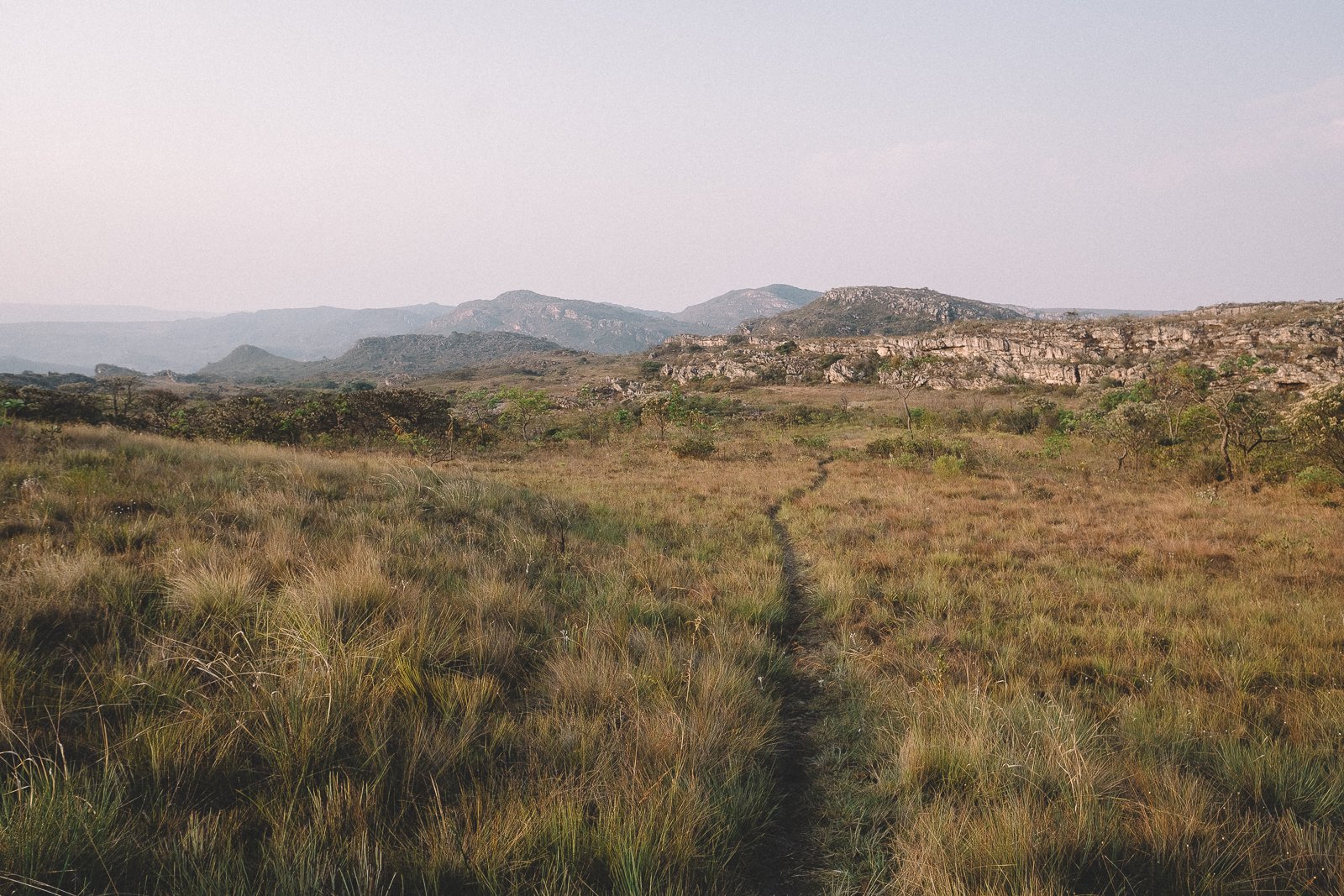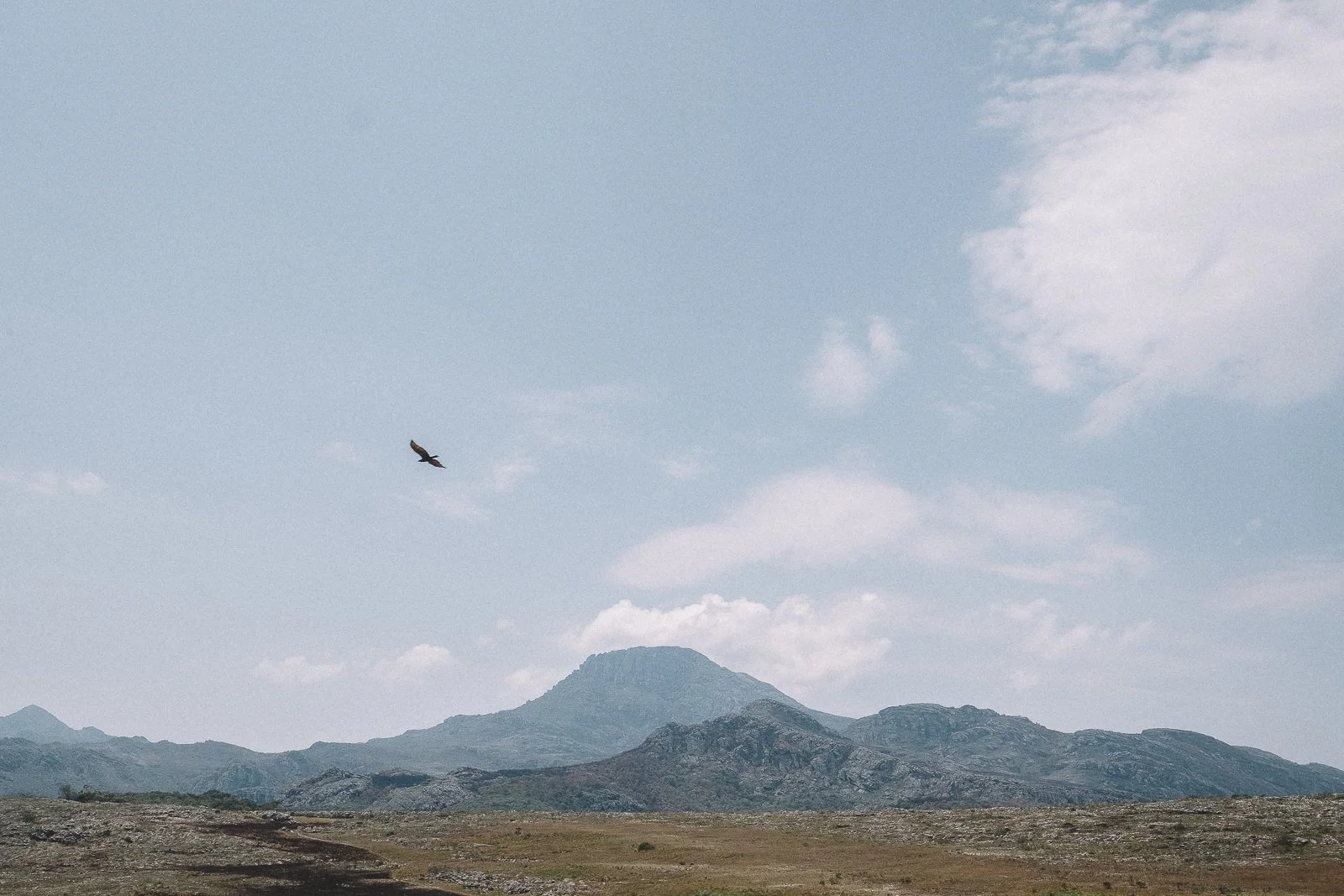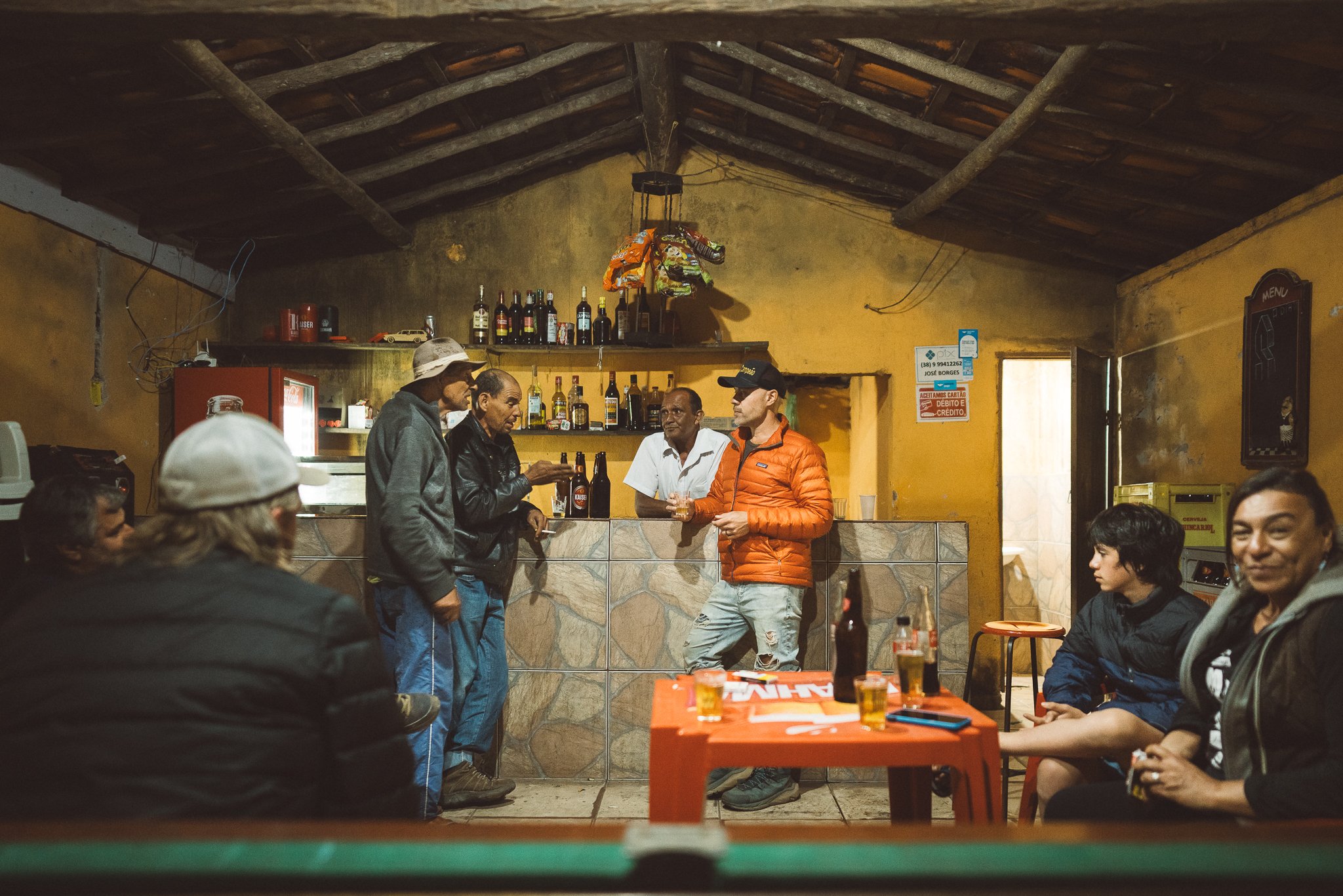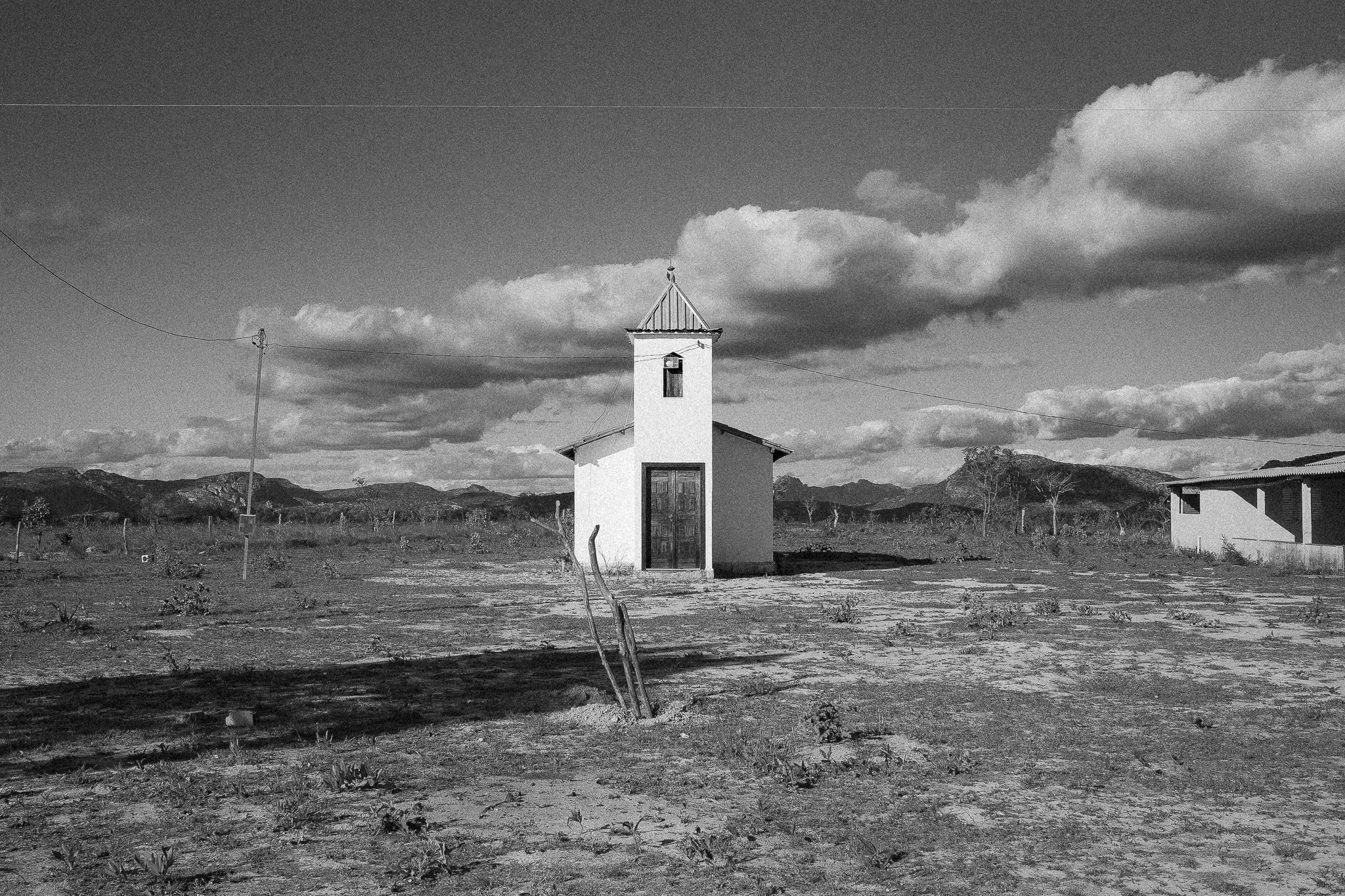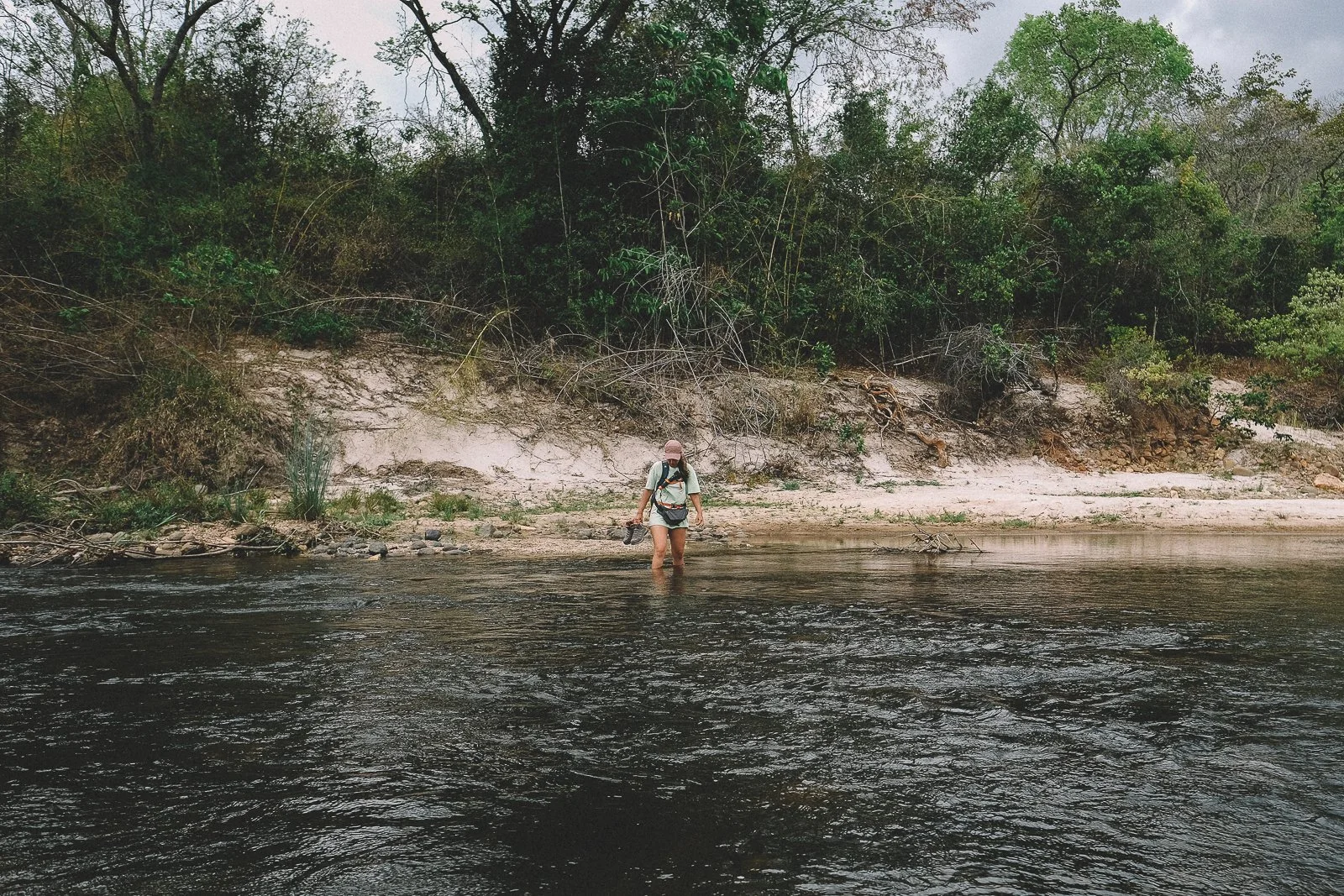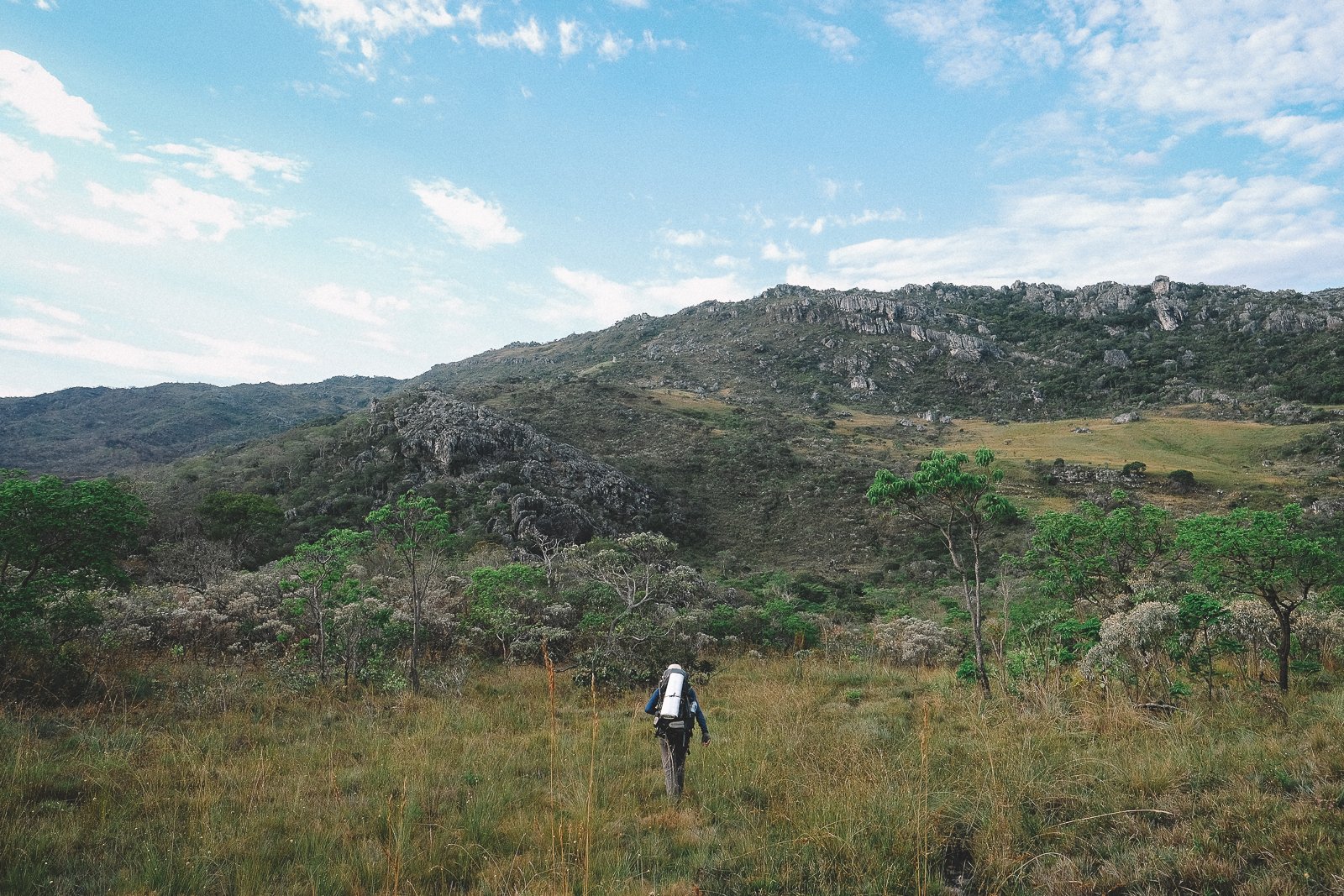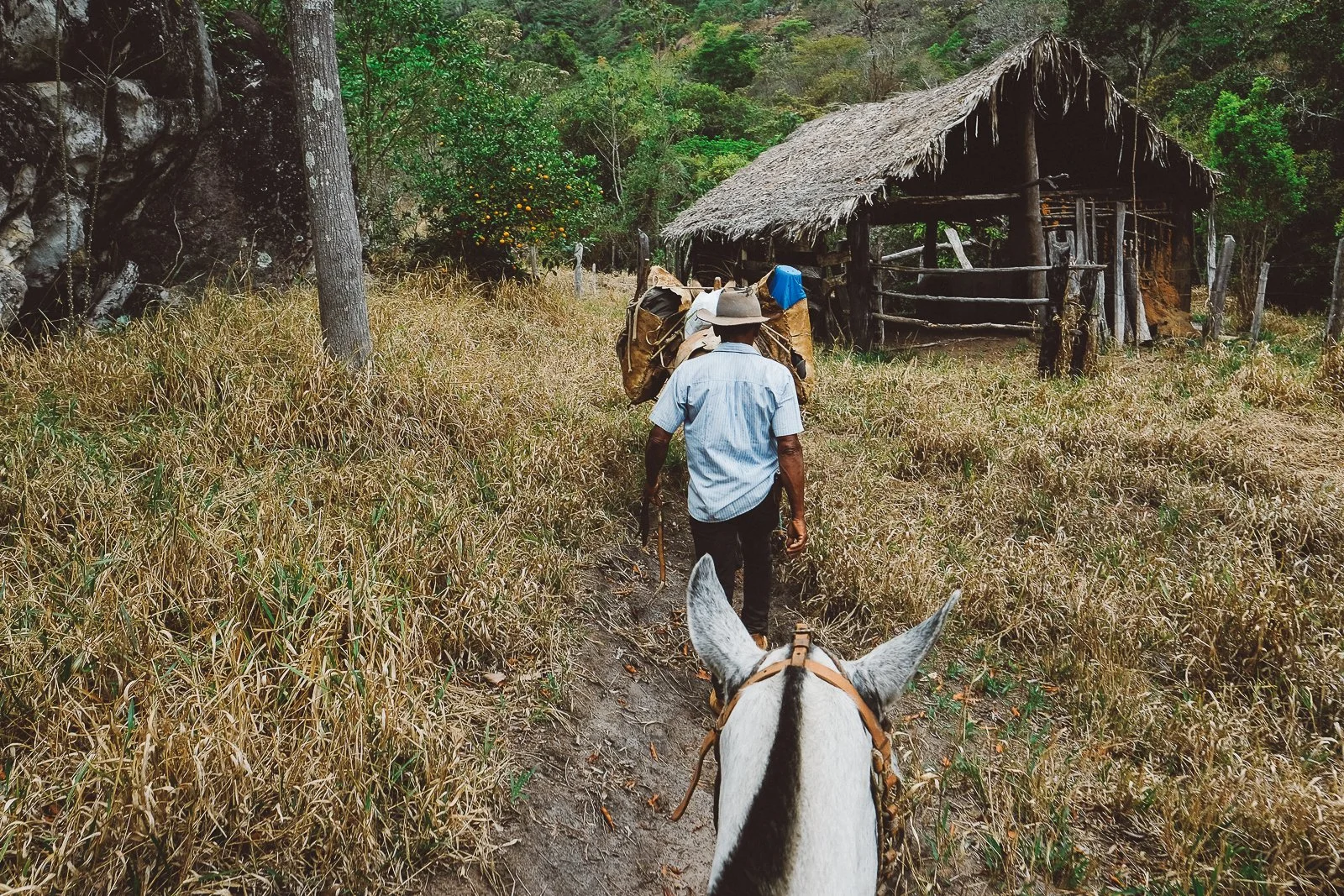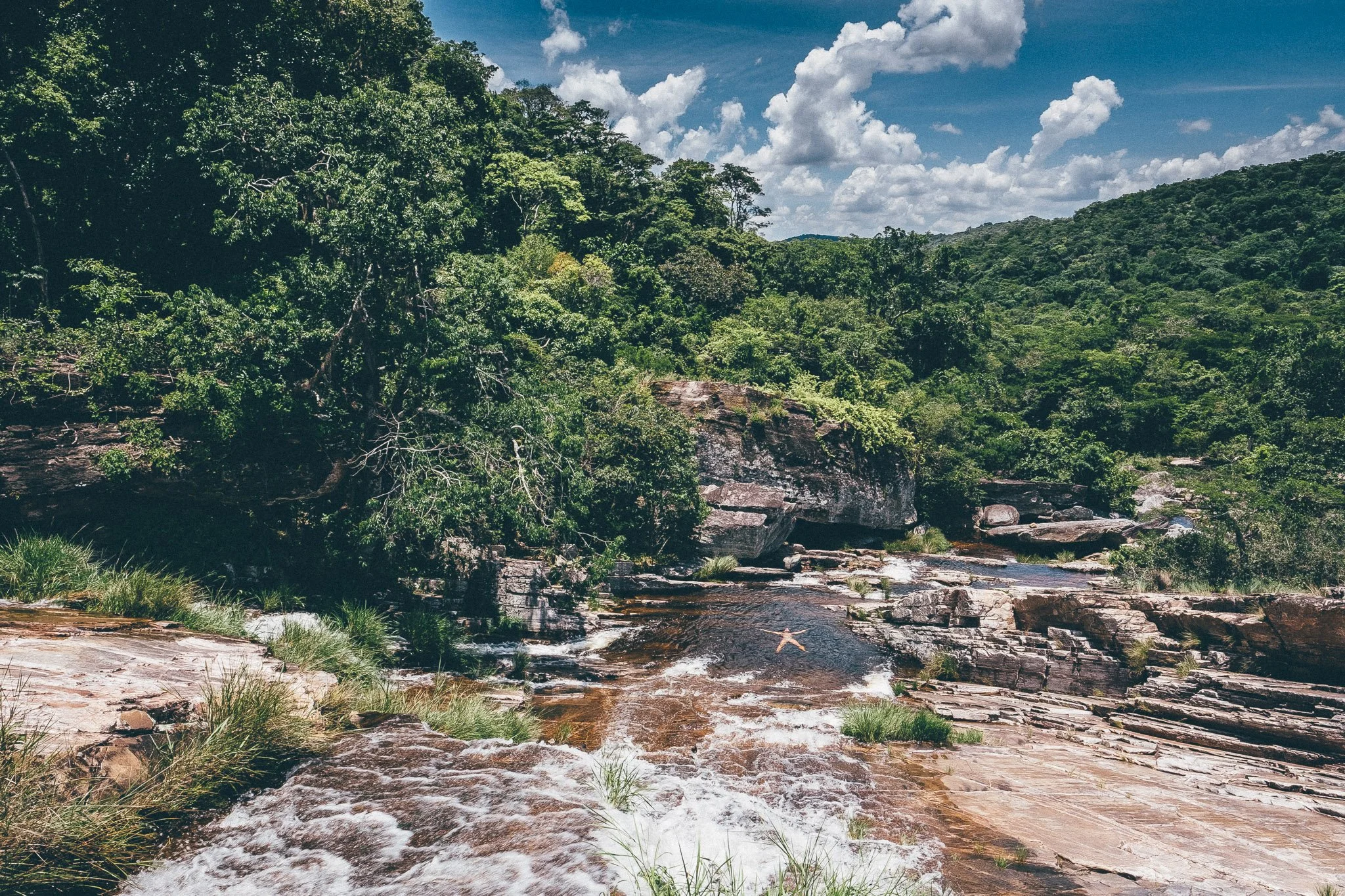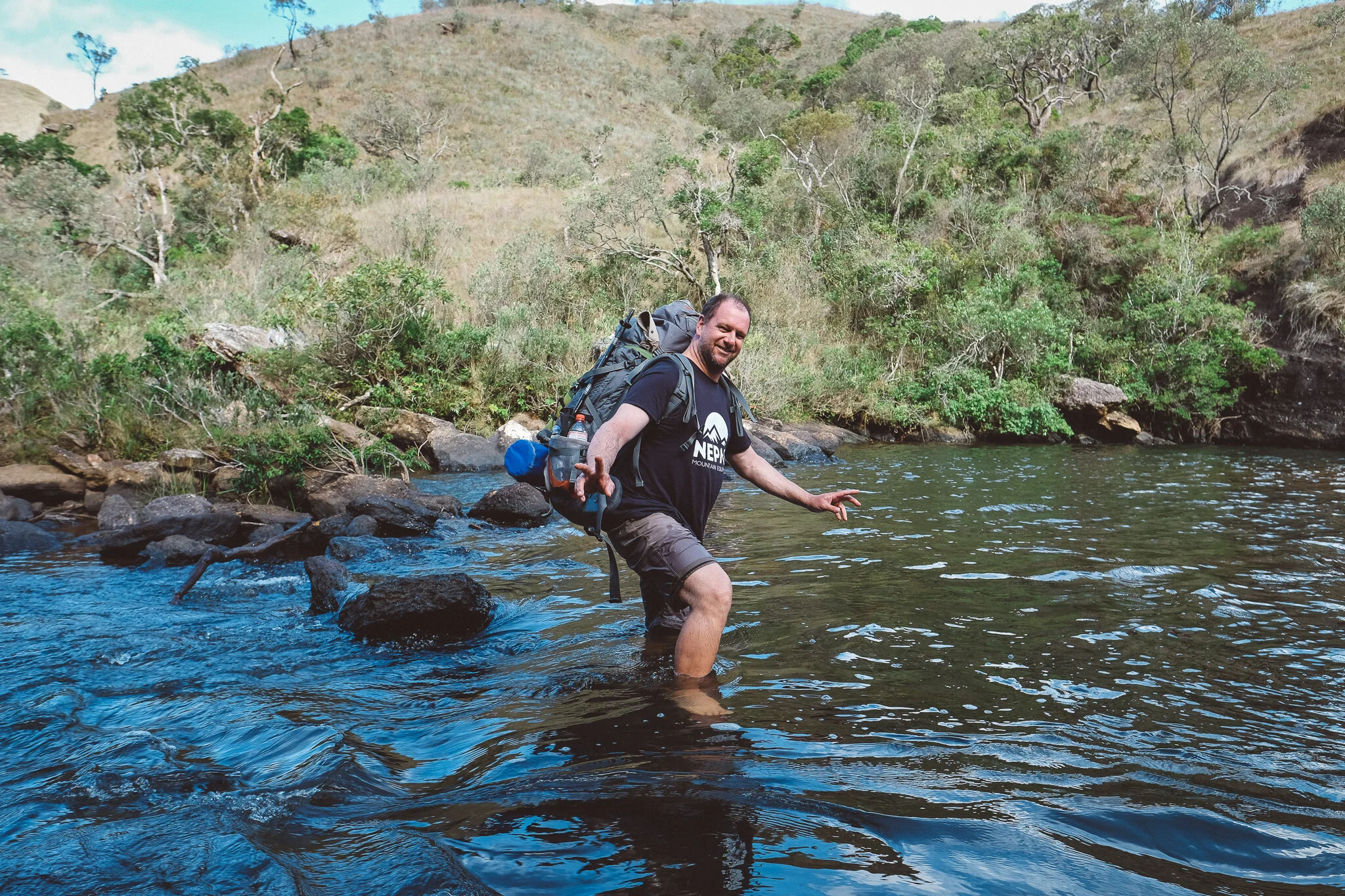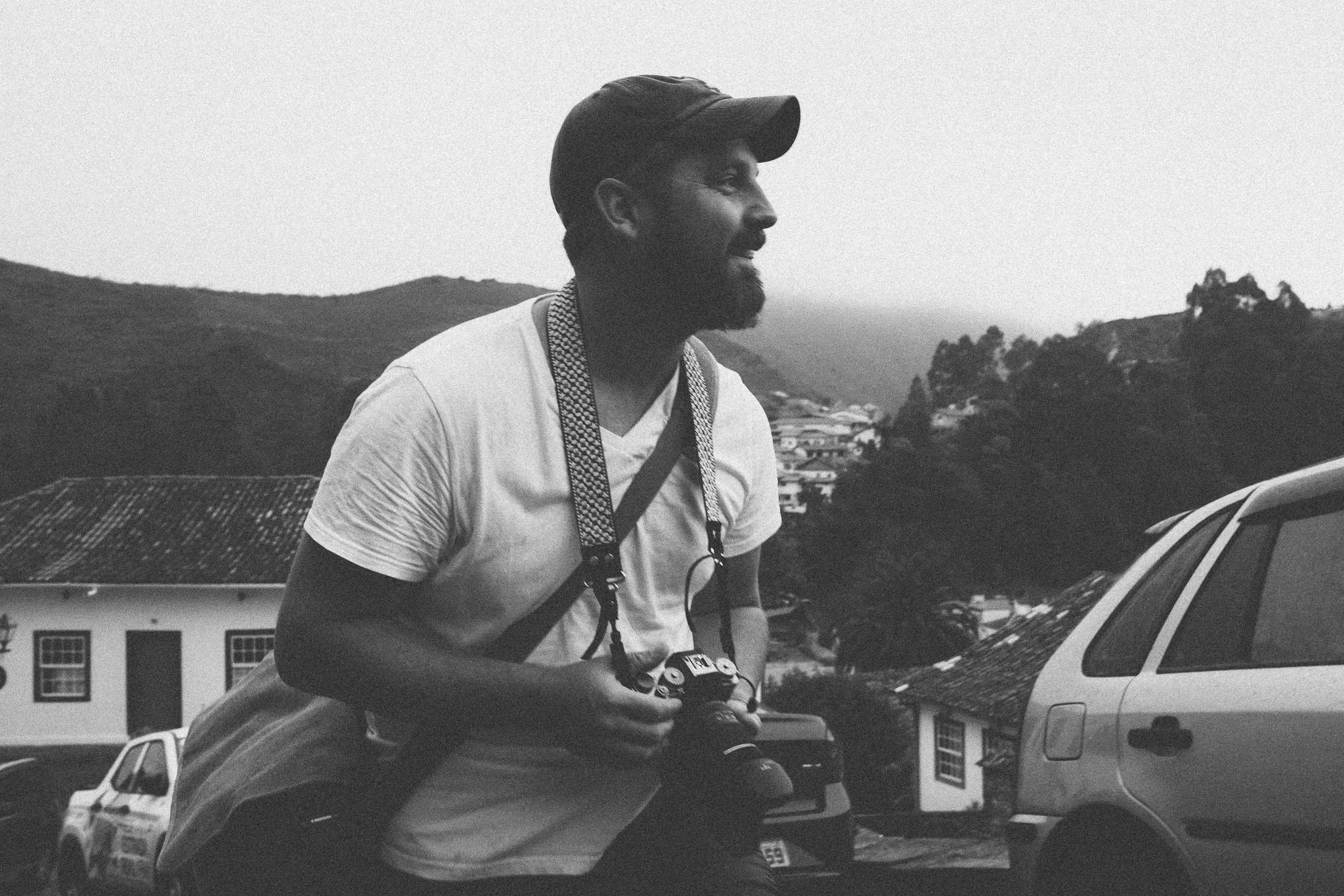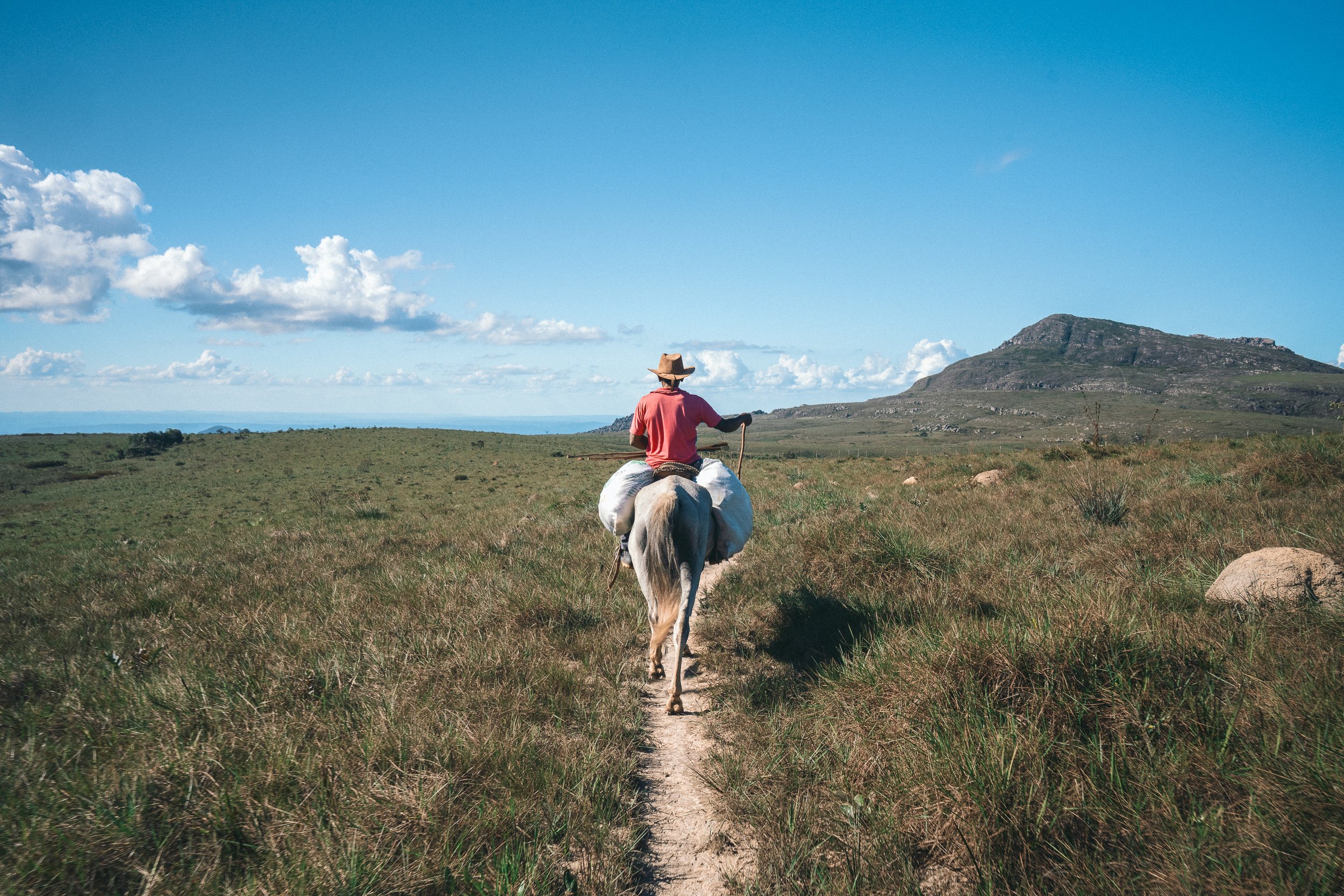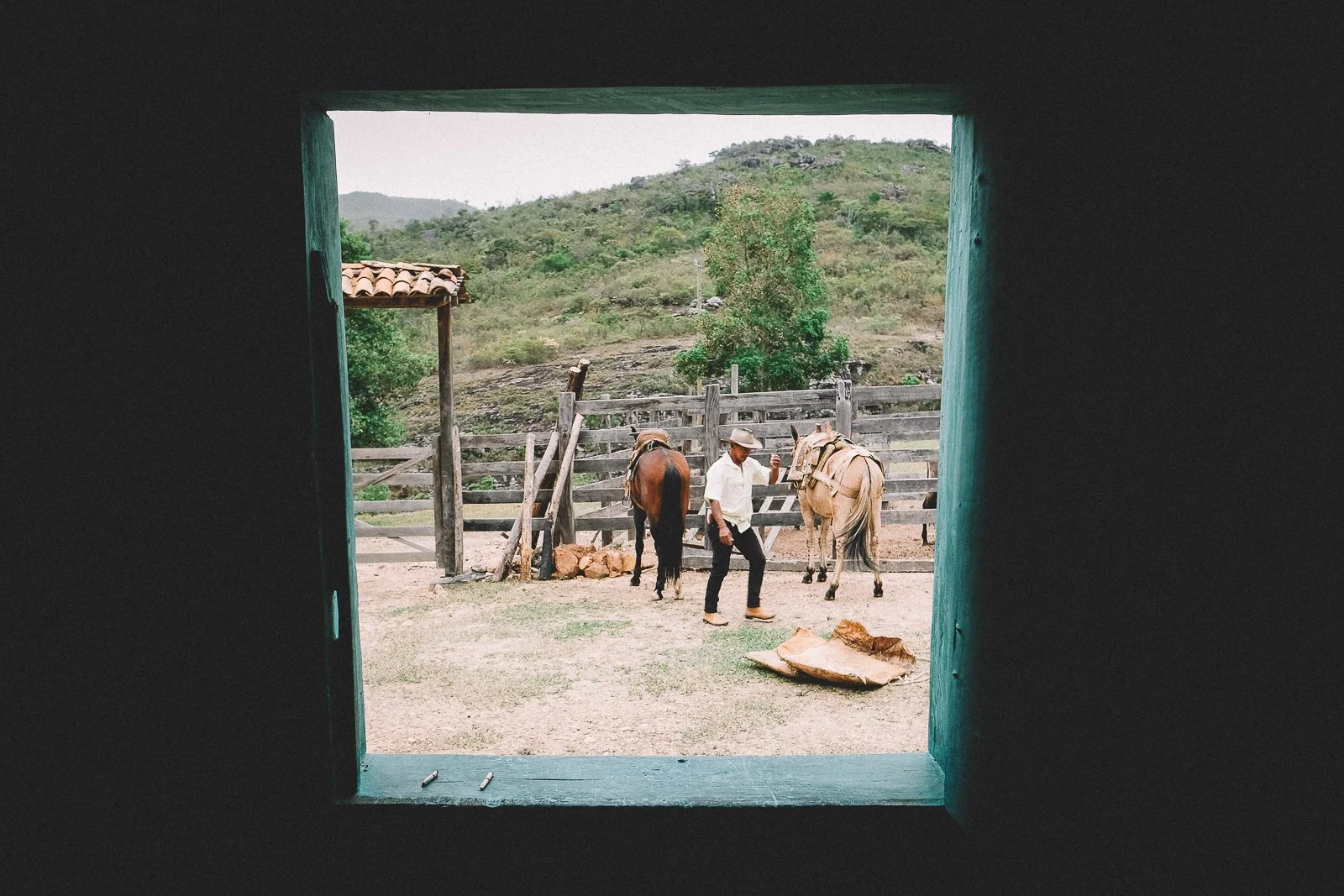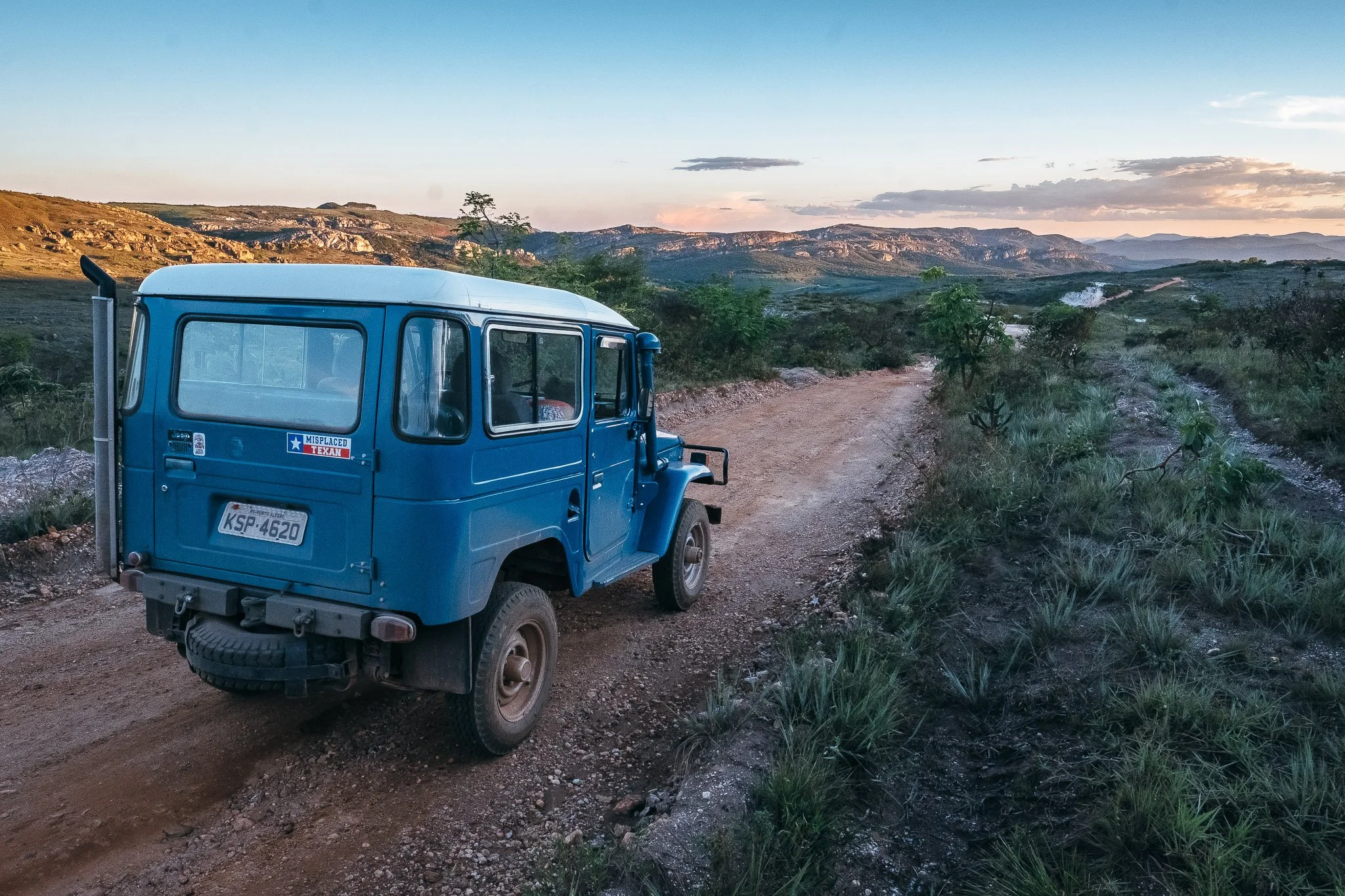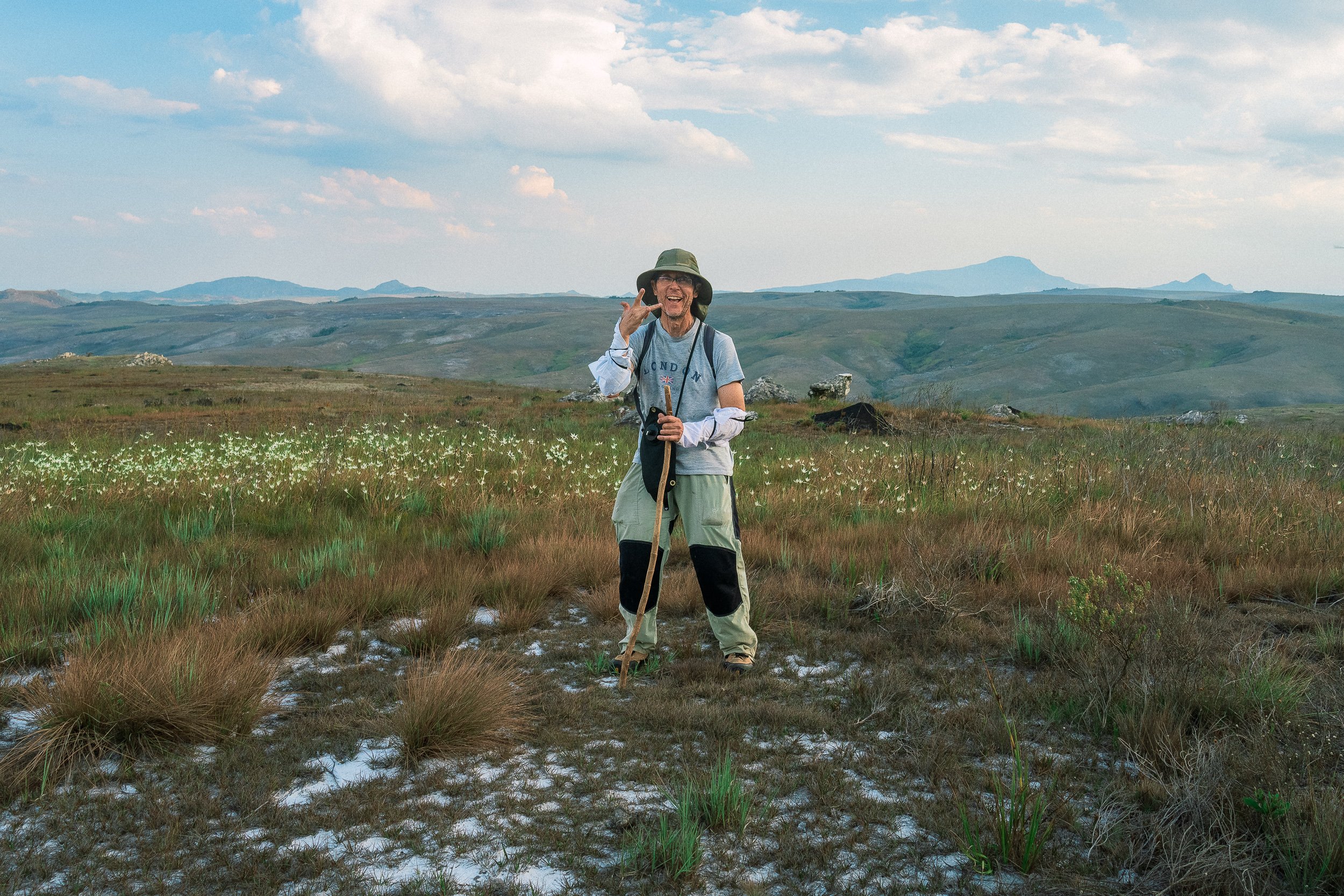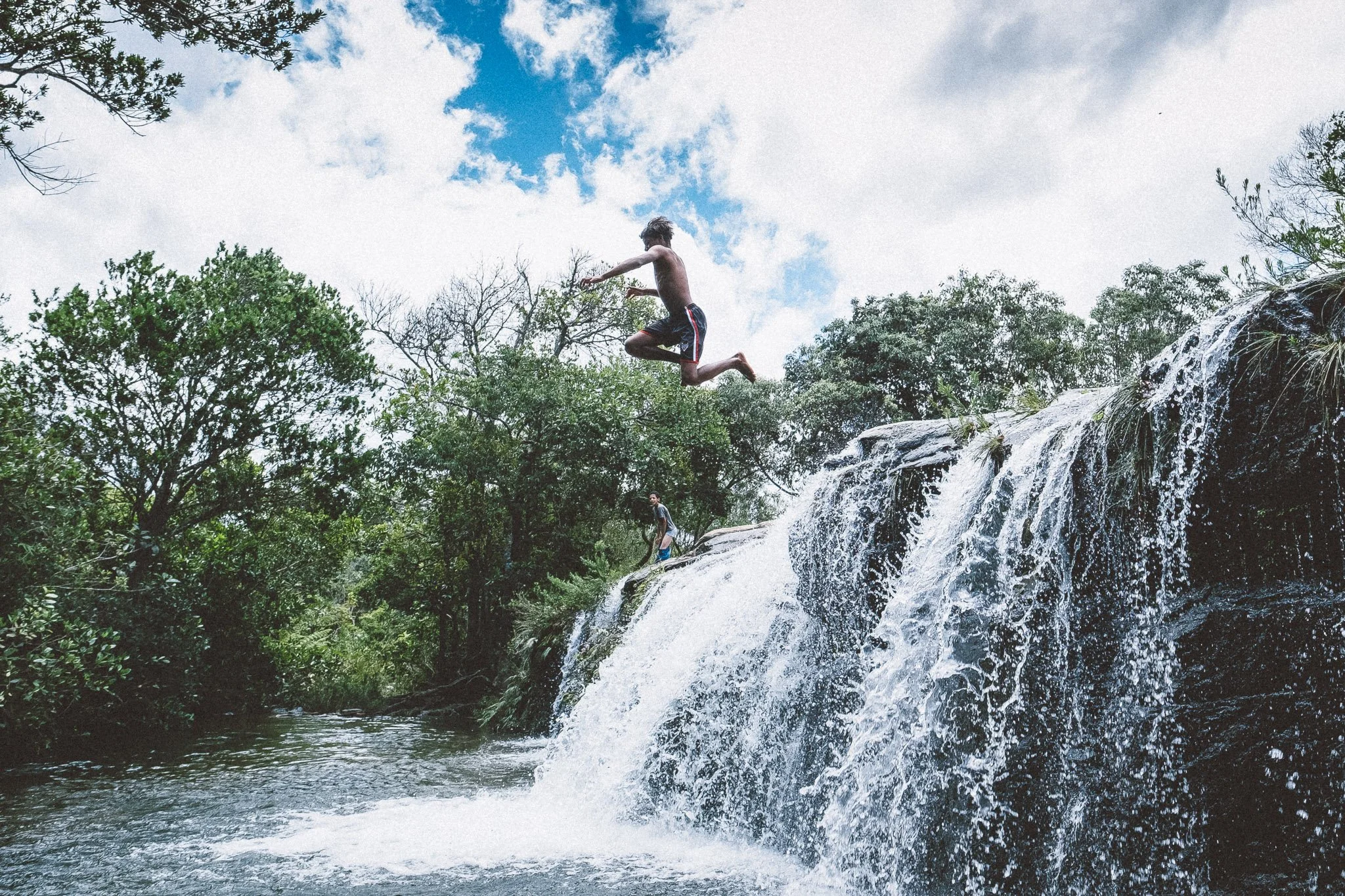
“Here and there, between the stern peaks, lie patches of snow-white sand or a narrow bit of green plain, confused and orderless, a fibre in the core of rockmountain. The land… is illiterate, and it is wild.”
- Sir Richard Burton, Explorations of the Highlands of the Brazil (1869)

At a Glance
A full-throttle crossing through the dust, myth, and Highlands of Brazil.
-
In short: Two weeks of non-stop motion in the wild heart of Brazil — part field report, part fever dream.
This is an immersive, fast-moving journey through the backroads, rivers, and ridgelines of the Serra do Espinhaço — a rarely explored stretch of the Brazilian highlands with more history, mystery, and contradiction than most travelers would dream of touching.
We designed this itinerary for an exclusive expedition with the Financial Times in 2024, whose writer, Paul Richardson, later wrote:
“Out in this untrammelled wilderness, there would be moments of exhaustion, but also of exhilaration, such as I’d never known in a lifetime of travel.”Over the course of 14 days, 4 –8 travelers will join our full-time crew of 5 and part-time crew of 10+ as we trek, ride, canoe, and overland across 514 km of historic trails, dusty roads, and pristine rivers — gaining and losing over 13,000 meters of elevation, and passing through:
– 8 conservation units
– 3 UNESCO sites
– 18+ waterfalls
– 20+ communitiesCome for the chance to experience a place that few outsiders have. For the satisfaction that comes with moving through a place — not just around it.
And for the camaraderie, joie de vivre, and memories that no itinerary could possibly prepare you for. -
Don’t expect much downtime. Also:
City tours. Souvenir shops. Famous landmarks. Fancy food. Opulent accommodations (with a few notable possible exceptions). Wine tastings. Sleek 4×4s (we prefer the kind you can repair in the field). Constant Wi-Fi (you’ll have it — just not constantly). Cell service (ditto). Television. Complimentary hotel shampoos, conditioners, or hand lotion. Other folks on the trail. Any other international visitors, at all.
This trip packs a punch. Most days are long and highly active — whether on foot, by 4×4, by horse, or by river. Some days are less intense than others, but rest is not the theme of this trip. Motion — and carpe diem — is.
That said, we always make time for the good stuff: festive evenings, good meals, and the kind of human connection that makes the miles worth it.
-
14 days / 13 nights
-
4 – 8 Travelers
7+ Full-Time Crew Members
15+ Part-Time Support Crew
[Meet the Crew →] -
5 / 5
With 6–9 days of trekking (depending on your preferences), 4 days of optional trail riding, 5–6 days of overlanding, and an afternoon of canoeing thrown in for good measure — this is about as active a trip as a traveler could hope for. It’s also one of the most rewarding ways we know to spend time between culturally rich mornings and evenings in the backcountry communities of the Espinhaço.
Trail days average around 20 km and 1,200+ meters of cumulative gain and loss across varied terrain. Water crossings are frequent, and some days may stretch past 30 (or even 35) km, depending on weather and trail conditions.
Bushwhacking (especially during Chapter II) is part of the deal — as are river crossings, rocky climbs, snakes, insects, and whatever else the wilderness throws at us. That’s the cost of real contact.
Homestays (4 of our 13 nights — all safe and welcoming, but short on creature comforts) are an enriching, unmissable experience, but don’t always guarantee the best night’s sleep. Ditto for our camping overnights (3 of 13 nights) in the untamed wilderness of Sempre Vivas.
Being in excellent physical condition is always helpful — especially in Chapter I. But in our experience, it’s the steady, resilient travelers who tend to thrive.
This trip gets easier as we find our rhythm.
And fortunately, the rhythm of this trip is easy to find. -
Cerrado (Brazilian Savannah), Mata Atlântica (Atlantic Rainforest)
-
April 13 – April 26, 2026
[Contact us →] or [Hold my place →]
-
Don’t let our “Land Cruisers & cold ones” imagery throw you off course: this is a highly active, culturally immersive trip — and most travelers will find at least some part of it challenging.
That said, being in excellent shape isn’t the only thing that matters. We’ve completed similar expeditions with enthusiastic first-timers who did remarkably well, and with seasoned journalis—er, trekkers—who struggled. At the end of the day, mindset, resilience, and how your body responds to two fast-moving weeks on the trail, road, and river is what matters — much more than mileage or muscle.
If you’re reasonably fit, open-hearted, culturally inquisitive, and tired of pretense — you’ll likely do just fine (and love it).
That said, we do not recommend this trip for first-time international travelers, nor do we accept solo applicants under the age of 25. A signed Bill of Good Health from your healthcare provider is required as part of your application.
Think you might be game for this one?
We’re here if you want to talk it through.
Lost Trails / Bad Roads / Wild Nights
29 Tales that Set the Scene →
ITINERARY
A Full-Contact Crossing of Brazil’s Backlands
Part field report, part fever dream →
Still here? We're here if you have questions. If you'd like to read the full day-by-day itinerary — the long version — just say the word. We’ll gladly send it your way.
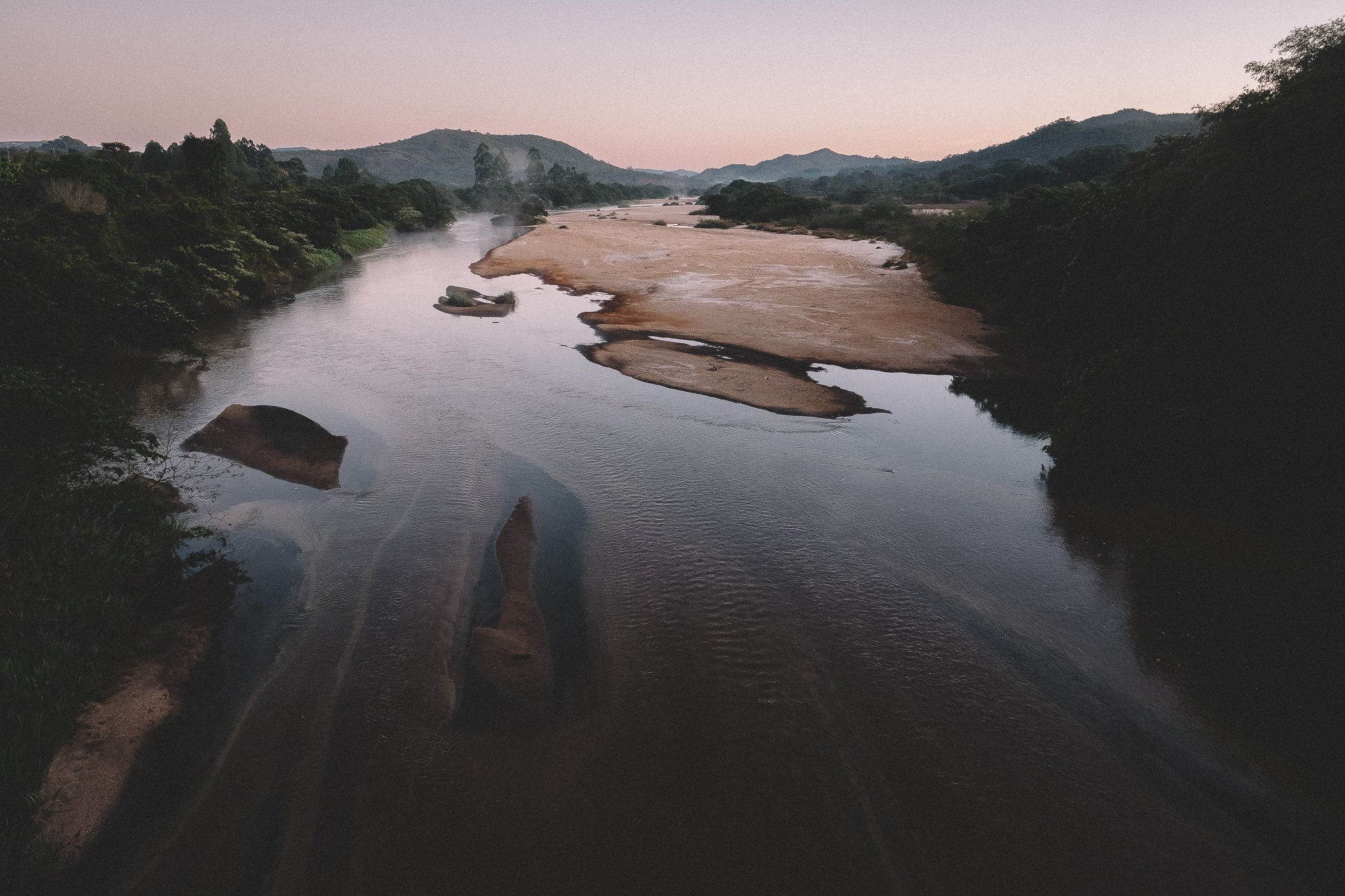
Into the Highlands
Once the epicenter of the global diamond trade, Brazil’s Serra do Espinhaço Meridional (the geomorphological name for the rocky mountains surrounding Diamantina, in the state of Minas Gerais) was abandoned and largely forgotten by the outside world for nearly two centuries.
Today, it’s on the cusp of being recognized as one of the most spectacular places on earth.
3 UNESCO Designations
2 Biodiversity Hotspots
19 Conservation Units
3,000+ species of plants (estimated)
7% of Brazil’s total biodiversity*
0.8% of Brazil’s national territory
* Brazil is the most biodiverse country on earth
The Route Ahead
Total Days: 14
Trekking Days: 6-9*
Riding Days: 0-4*
Overlanding Days: 5-6*
River Days: 1
Transfer Days: 2
Trail Distance (km): 224*
Overland Distance (km): 290**
Transfer Distance (km): 557**
Trail Elev. Gain/Loss/Total (m): 13,711
*On certain days, you’ll have the option to trek, ride, or overland between destinations.
On Riding Days, mules can carry your pack if you choose to trek.
**Trail Distance includes both trekking and riding segments.
Where We Sleep →
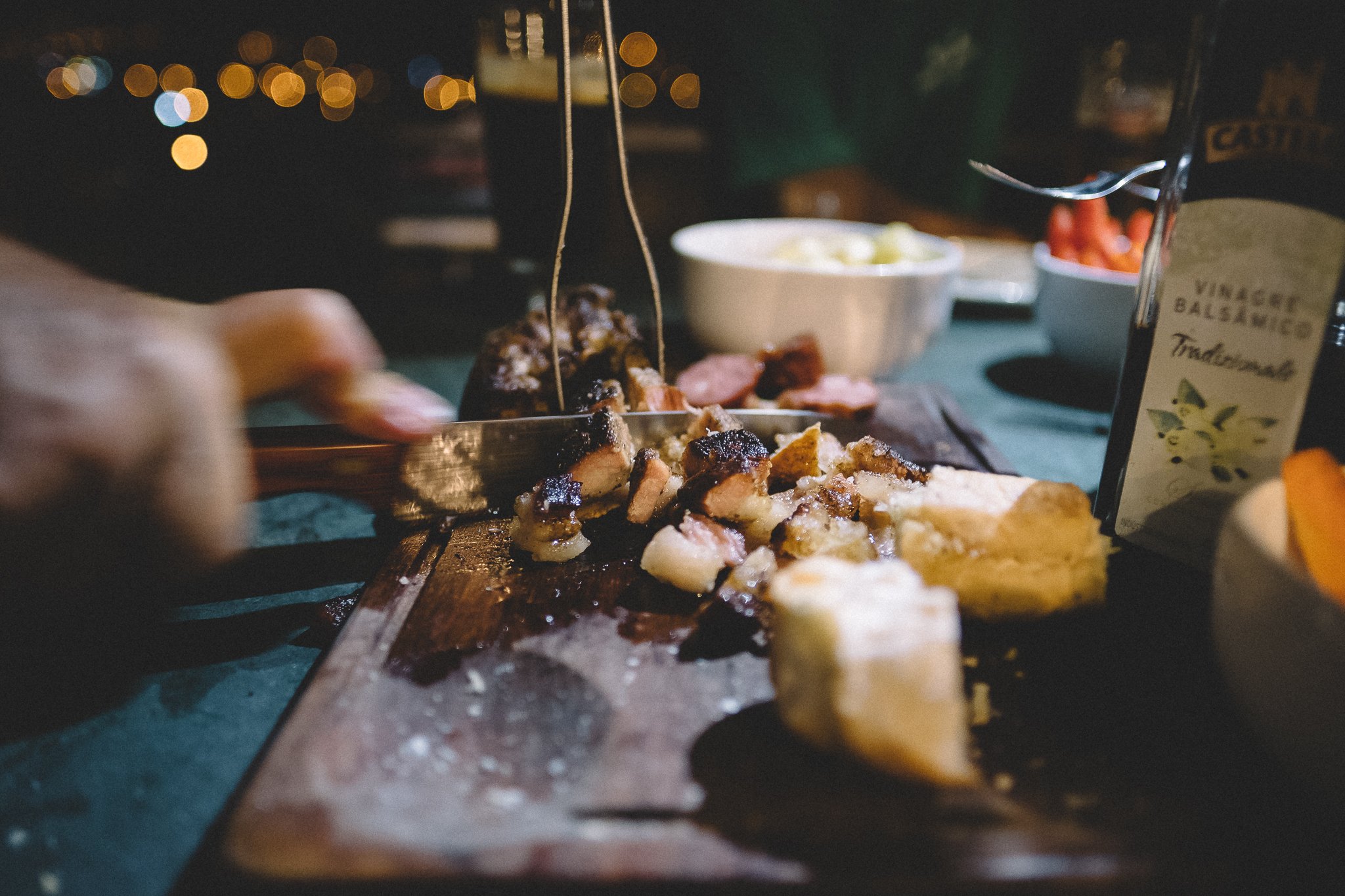
What We Eat
Tropeiro. Torresmo. Frango com quiabo.
If you’re unfamiliar with comida mineira, you will be by the end of this trip — and Brazilians everywhere will be jealous.
From piping hot, highly caloric home-cooked meals — prepared by skilled hands in seasoned cast-iron over wood-fired stoves — to more refined offerings in Diamantina, let’s just say: we rarely meet our weight-loss goals.
It’s worth it.
Bom apetite.
Your Crew (→)
Questions? We’re here when you’re ready to talk it through.

What’s Included
Beds. Meals. Mules.
Tents. Packs. Poles.
Bandies. Owls.
And a plan to get you across.
-
4 pousadas
3 wilderness campsites
2 homestays
2 private homes
1 wilderness refuge
1 resort
-
13 breakfasts
14 lunches
13 dinners
Daily trail snacks
-
We provide all ground & river transportation within Brazil, from touchdown to take-off. This Includes:
Round-trip transfer to/from Belo Horizonte - Diamantina
All regional overland transportation
Horses & Pack Mules
Canoes and/or Jon Boats (depending on river conditions)
Two (2) support 4x4s & one (1) support motor bike
Emergency ground transportation as necessary
-
Six to nine (6 – 9) full-time crew members:
2 Expedition Leaders / Country guides / Translators
1 Regional Guide / Naturalist
3 – 6 Drivers
5 – 10 part-time crew members, including:
Local guides, mule drivers, horsemen, boatmen
Cooks, porters, transfer drivers, and other support personnel
Learn more about the individuals who bring this journey to life.
[Meet the Crew →] -
Camping + Trail
Tents, sleeping bags, sleeping pads
Camp kitchen + tableware
Trekking poles (available on request)
Water filters and purification systems
Communications + Safety
Two-way radios (crew-use only)
Satellite comms devices (crew-use only)
Emergency beacons (crew-use only)
First-aid supplies (crew-use only)
-
All documentation and entry fees (where applicable) for our visits to:
Sempre Vivas National Park
Rio Preto State Park
Biribiri State Park
Itambé State Park
Vila de Santa Bárbara
Vesperata (Diamantina)
-
Certified Wilderness First Aid on staff (both Expedition Leaders)
3 full-time support/rescue vehicles
Satellite comms + multiple first-aid kits (trail & vehicle)
Daily communication with local authorities
-
Pre-Expedition Zoom (30 days prior to departure)
Pre-Expedition Group Chat (WhatsApp, launched after application acceptance)
Post-Expedition follow-up (~30 days after your return)
Additional meetings on request
-
Expedition Dossier (itinerary, maps, routes, basic language guide — pre-trip)
GOGO journal + pens (for the WiFi-less nights — on arrival)
Travel plug adapter (on arrival)
Emergency whistle (on arrival)
Memory card of crew photos & videos (post-trip)
GOGO tee shirt (post-trip)
GOGO patch + sticker (post-trip)
Dispatches From the Backlands
Diamonds & flowers. Slavery & fires. Wilderness, water, and an identity crises thirty years in the making.
-
The Amazon (rightfully) grabs the headlines. But Brazil wouldn’t be the most biodiverse country on earth were it not for its “other” ecological treasures — two of which are found in the Espinhaço: the Cerrado and the Atlantic Rainforest (Mata Atlântica).
Trailing only the Amazon in size, the Cerrado is the most biodiverse tropical savannah on the planet — home to:
– 800+ species of birds
– 10,000+ species of plants
– 120 reptiles, 150 amphibians, 1,200 fish, 200 mammals
– 90,000 species of insectsThe Atlantic Rainforest, meanwhile, holds over 20,000 species of plants, 1,000+ birds, 2,000 vertebrates, and 300 mammals — many found nowhere else on earth.
Geomorphologically speaking, the Espinhaço is a tale of these two endangered biomes — a rare, high-altitude transition zone where their systems converge. And in that overlap lies the Campos Rupestres: a rocky, flower-strewn ecosystem found almost exclusively in this range, and considered by many to be Brazil’s most biodiverse habitat.
You’ll get to witness this interplay between grasslands and rainforest throughout our Expedition — especially in Chapter I.
There’s nothing else like it on earth.
-
Don’t expect to read much about it on the interwebs, but the Serra do Espinhaço Meridional — the geomorphological (mouthful of a) name for the mountainous region surrounding Diamantina — harbors a remarkable 19 Conservation Units, encompassing nearly 5 million acres of protected land. That’s about the size of New Jersey.
Collectively, they’re known as the Mosaico do Espinhaço — and together, they represent one of the highest concentrations of species endemism on Earth.
We’ll traverse eight of these units during our Expedition, including:
Sempre Vivas National Park
The State Parks of Biribiri, Rio Preto, and Itambé
The Águas Vertentes State Environmental Protection Area
The Municipal Environmental Protection Areas of Rio Manso and Serra de Minas
The Várzea do Lajeado e Serra do Raio State Natural Monument
-
There’s a saying among garimpeiros in the Espinhaço that “All stones look like diamonds — but diamonds don’t look like any other stone.”
The same might be said of Sempre Vivas National Park — a vast stretch of high-altitude savannah that certainly feels unlike any other corner of the Cerrado.
Spanning 1,241 km² (roughly the size of Los Angeles), but with just a dozen full-time inhabitants, Sempre Vivas is the deep outback of a region that could itself be described as outback. Untamed, spectacular, and deeply controversial, the Park is a true undiscovered gem. It’s genuinely shocking how few travelers — from Brazil or abroad — make their way here.
We’ll spend eight days in and around the Park during our Expedition, including a four-day westward crossing in Chapter II and a glorious traverse of the Rio Preto River Valley in Chapter IV — once named one of Brazil’s five most beautiful treks by Go Outside magazine.
We don’t expect to see anyone else.
-
Before diamonds, flowers, or tourism (or the lack thereof), the Serra do Espinhaço was — and remains — a story about water. And in the end, it is water — not gemstones, flowers, or natural beauty — that has protected the region once again.
As the birthplace of several of Brazil’s most economically vital rivers — including the Jequitinhonha, Doce, and São Francisco — the Espinhaço is bursting with tributaries, creeks, streams, marshes, and peat bogs. Voluminous waterfalls spill from its escarpments in every direction, creating fertile farmland to the east and breathing life into the sertão to the west.
The region can be difficult to explore on foot — or even by vehicle — during the summer months (December through February), due to the frequent presence (or threat) of rain, lightning, swollen rivers, and muddy terrain.
But this is also when the vegetation is at its most verdant — and the waterfalls at their most spectacular.Daily storms typically taper off by early March, making fall (March–May) one of the most beautiful times of year: gushing waterfalls, exuberant vegetation, plentiful springs, and easily crossable rivers.
Winter (June–August) is extremely mild and dry, offering near-perfect trekking conditions — though water levels continue to drop in rivers and falls as the season progresses.
By spring (September–November), the long dry season finally breaks. September, in particular, offers another glorious window to explore the region: the parched savannah landscape bursting with cactus fruit and wildflowers, and gently flowing rivers criss-crossing the landscape.
-
Serra is a word you’ll hear often — and in a dizzying array of contexts — throughout the Expedition.
Its most ubiquitous translation is “saw” (as in a serrated blade), but in the Espinhaço, the usage leans toward the word’s other literal meanings: mountain range, mountain, ridge, highlands, and so on.Our trip may be set in the Serra do Espinhaço, but we’ll temporarily leave the serra — lowercase, as in “the mountains” — at the end of Chapter II, when we descend into the lowlands.
And about those lowlands:
Across most of Brazil, Sertão (capitalized) refers to the inhospitable hinterlands of the Northeast — an almost-mythical landscape, famous for unbearable heat, tortured trees, poverty, and the hardened lives that emerge from it.In the Espinhaço, however, even the sertão (lower case, as in “agrarian lowlands) manages to be green — lined with waterfalls, punctuated by riparian forests, and bursting with fresh water.
Wordplay aside, you’ll have a full week to see (and enjoy) it for yourself in Chapter III.
-
Getting from Point A to Point B has always been an adventure in the Serra do Espinhaço — and nowhere is this more evident than along the region’s spectacular (and virtually empty) network of historic trails.
While urban footpaths, game trails, dirt roads, old rail lines, and park-administered nature trails each have a role to play in the Espinhaço’s winding logistical labyrinth, three kinds of passages define the backcountry here:
Colonial-era stone paths, built by enslaved Africans to facilitate the diamond trade along the Estrada Real
Winding mule trails, used by tropeiros to transport goods until as recently as the 1980s
And centuries-old smuggler routes — later retraced by European naturalists like Sir Richard Francis Burton and Augustin Saint-Hilaire (among others) during their 19th-century expeditions across the Cerrado
Our team has spent the past three years rediscovering this lost network — documenting its history, geography, and inhabitants while charting our own expeditions.
As much as we’ve loved having the trails to ourselves, it’s an even greater pleasure to share them with curious, adventurous minds like yours.
-
According to the UN, a staggering 89% of Brazilians now live in urban areas (typically defined as population centers with 2,000 or more inhabitants) — compared to just 56% of people worldwide.
Our Expedition casts a light on the life among the forgotten 11%.
We’ll pass through 22 communities, overnighting in 16 of them. From UNESCO World Heritage city Diamantina (pop. 50,000) to far-flung Santa Rita (pop. <10), each community on our route carries its own story — and its own reason for being.
Among the places we’ll visit:
The quilombola communities of Capivari, Bica d’Água, Macacos, and Quarteis do Indaiá
The colonial-era mining districts of Mendanha, Curralinho, São João da Chapada, and São Gonçalo do Rio das Pedras
The historic vilas of Biribiri and Santa Bárbara
The remote mountain hamlets of Pinheiros and Abóboras
The agrarian communities of Curimataí and Santo Antônio do Itambé
-
We’re fond of saying that the difference between arriving in a small community on foot and by vehicle is the difference between arriving in a ghost town and a metropolis.
Exaggeration or not, there’s nothing quite like being received graciously by kind souls in “the middle of nowhere” after a full day — and sometimes night — of trekking through the harsh elements.
Having the opportunity to experience how folks truly live in this part of the world is a privilege few will ever know.
Being able to scarf down a home-cooked meal and (where possible) a hot bath? That’s even better. -
Tropeiro. Tutu. Torresmo. Frango com molho pardo.
If you’re unfamiliar with the hearty regional cuisine of Minas Gerais, you will be by the end of the trip — and Brazilians everywhere will be jealous.Still relatively unknown abroad, comida mineira is deeply beloved within Brazil, where it’s celebrated for its timeless preparation methods — traditionally relying on wood-fired stoves and clay or cast-iron cookware — and fresh, minimally processed ingredients.
Locally sourced fruits and vegetables, high-quality dairy, and home- (or farm-)raised pork and chicken are all hallmarks. So are salted beef and mandioca (cassava) in the north of the state — while steak and seafood are notably rarer here than in neighboring regions.
Treats unique to the Serra do Espinhaço include angu, quitanda, samambaia, carne de sol (ubiquitous throughout the sertão, but less so farther south), frango caipira, and queijo do Serro — a semi-cured local cheese that’s won international awards and generated a promising culinary buzz around the Serro microregion.
Finally, a word about that most beloved of Brazilian delicacies: pão de queijo.
It may not have been invented in Minas (and rumor has it, maybe not even in Brazil…) — but most Mineiros will tell you it was perfected there.
You’ll get to judge for yourself throughout the Expedition. -
The gypsy woman who convinced a miner to leave his purse of “cursed” diamonds in her capable hands.
The mysterious captain who came by river, made a fortune, and spent the rest of his days as a backcountry fugitive.
The rancher who was hugged to death by a giant anteater near Inhaí.
The orphan girl who was raised in a cave near Biribiri.Welcome to the Serra do Espinhaço — where miners, mule-drivers, and other mestres of the backcountry still pass down the colorful histories of the not-so-distant “good ol’ days” to barkeeps, house guests, and anyone else who’s willing to listen.
We, for one, love to listen.
-
The Mosaico do Espinhaço — literally, the “Mosaic of the Espinhaço,” known locally as os Parques or “the Parks” — may be the single most complex challenge facing the range today.
Most locals recognize the beauty of the mountains — and the importance of the waters that flow from them. But the continued creation of conservation units on formerly private lands is viewed by many as government overreach at best, and an indifferent intrusion at worst.
At the heart of it all: economics.
The Espinhaço is rich in rare minerals — and home to some of Brazil’s historically poorest communities. Over just a few decades, many Park-adjacent towns have found themselves caught in a slow-motion proxy war between preservation and extraction, between tourism and survival.
Some residents believe beauty and biodiversity can replace diamonds and flowers. Others see the lack of tourism today as proof that the government has no plan — and that the land must provide, now.
With environmentalists and mining lobbyists both shouting, you’re likely to hear a few colorful perspectives along the way.
Let’s see what conclusion you arrive at.
-
What comes next is anyone’s guess.
The new mayor of Diamantina — by most accounts a likable man and one of action — has done well to balance the interests of the mining industry with those of environmentalists. It’s a tightrope, though — and one that may not be walkable forever.
Whether there’s a true long-term vision for Diamantina is harder to say.
In our view, the Espinhaço deserves to become Brazil’s next great center of ecotourism — with Diamantina as its natural hub. The region’s equally stunning sister region, Chapada Diamantina, has already walked that path, but the conditions aren’t yet in place here.
Districts still lack basic infrastructure. The Parks lack basic visitor support. And there’s been no visible effort to market the Espinhaço beyond its historic core — namely, the Vesperata and Carnaval.
So Diamantina drifts — content to fade further into the background, even as the global community begins to champion the landscapes around it.
Maybe the vision just isn’t there yet.
Or maybe it’s dormant — and this Expedition is about to wake it. -
UNESCO World Heritage City. Terminus of the fabled Estrada Real.
Living testament to Portuguese Baroque and Rococo architecture.
Former diamond capital of the world.Diamantina somehow manages to be all of this and more.
The cultural capital of the Espinhaço.
A vibrant college town at the crossroads of past and present.
The spiritual, economic, and logistical center of the entire region.Even UNESCO couldn’t resist the (admittedly irresistible) cliché:
“a colonial village set like a jewel in a necklace of inhospitable rocky mountains.”And yet, Diamantina (pop. 49,500) remains largely unvisited even by most mineiros — known more as a former Carnaval town than as a modern destination.
When people ask us what we love about it, we tell them:
“It’s a tourist Mecca without tourists.”
Which, in our book, makes it a traveler’s Mecca.
Odds & Ends
Prerequisites
prior trekking and/or outdoor experience is strongly recommended, but not required.
All applicants must undergo a complete physical examination and receive written approval from their physician within 3 months of the Expedition.
Travel Insurance
Proof of adequate medical & emergency travel insurance is required before joining the Expedition. Details are available in our Terms & Conditions. We’re happy to talk you through the details if needed.
What’s Not Included
Airfare
Medical & emergency evacuation insurance (minimum required)
Trip cancellation or other travel insurance
Visas
Any meal or activity not outlined in the itinerary
Alcoholic beverages
Gratuities (tips &/or community donations)
getting there & away
We’re happy to recommend travel arrangements to and from our rendezvous point in Belo Horizonte, Brazil. Please note that Gift of Go does not book international flights on behalf of travelers.
CONNECTIVITY NOTES
3G, 4G & 5G signals (in that order) are widely available across the Espinhaço frontcountry, where we will spend the majority of our evenings & mornings. Those signals are sporadic in the backcountry, however, where we’ll spend the majority of our days. Your connectivity will depend largely on your carrier & plan; if you’d like, we can provide you with a Brazilian SIM card upon your arrival. WiFi is available at many of our accommodations during the mornings & evenings of the Expedition.
Additional Reading
A Flower & A Way of Life in Peril — Scientific American
Life on the rocks in Brazil’s Campo Rupestre — the guardian
Explorations of the highlands of Brazil — Sir richard burton
Brazilian Diamonds: A Historical & Recent Perspective — Gems & Gemology, Spring 2017 Vol. LIII
The Espinhaço Range Biosphere Reserve — UNESCO
Globally important Agricultural Heritage System (GIAHS) Proposal — CODECEX

The Rearview
A legendary crossing through the dust, myth, and Highlands of Brazil.
14 days
8 conservation units
20 communities
3 UNESCO sites
224 km of lost trails
290 km of wild backroads
18 crew members
8 travelers (max)
18+ waterfalls
3 peaks
3,000+ species of plants
Calendar & Pricing
April 13 – April 26, 2026
$16,995 per person
Includes all crew, lodging, meals, permits, equipment, support vehicles & pack animals
— plus river & ground transportation.
Ready to take the next step?
[Hold my place.→]
Thinking of coming with 4 or more?
[Let’s talk.→]
Proofs of Life (→)
Photographs from Past Expeditions
FAQs
Have a question we haven’t answered here? Feel free to [reach out] or explore [our full FAQ page. →]
-
We’ve done similar crossings alongside enthusiastic first-timers who did remarkably well — and with seasoned journalis—er, travelers who struggled. So much of it comes down to mindset, resilience, and how your body responds to consecutive days on the move.
That said, this is a physically demanding expedition. You’ll need to be capable of carrying a 10–20 lb (5–10 kg) pack for 6–9 days, averaging 20 km per day with around 1,200 m of gain/loss. The terrain is rugged and varied — not especially high (1,000–2,000 m), but often overgrown, sun-exposed, and crisscrossed by streams and riverbeds.
We’ve found that things tend to get easier as the days go by — particularly during Chapter III — but everyone’s body and baseline are different. External factors like heat, rain, and trail conditions can play a big role, and so can internal ones like hydration, sleep, and recovery habits.
If you have concerns about your fitness, we recommend consulting with your physician or trainer before applying. We do require a signed Bill of Good Health as part of the process.
And if you want to talk it through with us, we’re more than happy to chat about what to expect and how to prepare. [Reach out anytime. →]
-
Food is part of the story — and part of the joy.
Over the course of 14 days, we’ll share more than 40 meals together (and plenty of trail snacks in between). The vast majority of those meals will be home-cooked and served in local homes, small restaurants, or family-run pousadas. In practical terms, that means hearty, unsophisticated, deeply satisfying comida mineira.
Minas Gerais cuisine is a point of pride across Brazil — known for its traditional techniques (wood-fired stoves, cast-iron cookware) and fresh, locally sourced ingredients. Pork, chicken, mandioca, corn, rice, beans, and fresh fruits and vegetables are staples. Dairy plays an outsized role in the Espinhaço region, with local cheeses having won national and international acclaim.
Breakfasts often include simple cakes and breads, homemade yogurt, local fruit, quitandas, and pão de queijo. Lunches and dinners tend to feature locally-grown stewed vegetables, handmade starches like angu, and generous portions of locally-raised protein — plus rice, beans, and farofa, of course.
During our traverse of Sempre Vivas National Park (in Chapter II), we’ll switch to rustic tropeiro-style camp meals — rice, beans, grilled or salted meats — cooked over the fire. At other times, we’ll visit more varied establishments: cozy pousadas, small-town gems, and the occasional rural resort.
We rarely make special requests when dining in homes. Instead, we invite our hosts to prepare what they love to eat. For many, cooking for a group of foreigners is both a rare event and a serious honor — and that spirit shows in the meals. Past travelers regularly cite the food as a highlight of the trip.
If you’ve made it this far, we think you’ll love it.
-
They’re humble. They’re heartfelt. And honestly — they’re often highlights of the trip.
On this Expedition, we’ll have the privilege of staying in two homestays — each distinct in layout, location, and character. One is a modest brick-and-mortar home perched atop a windswept campo. The other? A remote adobe home of local wood, white clay, and palm leaves — built by the owner himself and lit only recently by electricity for the first time (2024!).
Both homes are safe, welcoming, and fully equipped with beds, kitchens, and shelter from the elements. They also come with a few comforts: porches, furniture, hot water showers (one electric, one wood-fired), and in one case, Wi-Fi.
Bathrooms range from rustic-but-cozy to… let’s say, architecturally optimistic. Beds skew soft. If you’ve got a perfectly dialed-in mattress at home, this won’t be that — but it will beat a sleeping pad and sleeping bag. You’ll have plenty of chances to compare.
Neither host is wealthy. Neither lives in poverty. One of these families had never hosted travelers before we first arrived. The other had never hosted a foreigner. And that’s kind of the point.
The real magic of homestays happens inside the homes — around the dinner table, by the fire, during quiet conversations, or even in shared silence. Being warmly received after a long day on the trail is its own kind of wonder. It’s an experience that stays with you.
If you’ve read this far, we think you’ll love it.
For more details [reach out] with any questions. -
Just let us know early — ideally during the Application process — so we can plan accordingly. This is especially important for allergies and intolerances, where advance notice means we can prepare responsibly and thoughtfully.
Most dietary needs can be accommodated on this Expedition, including vegan, vegetarian, lactose- or gluten-free, dairy-free, kosher, keto, low-carb, and diabetic diets. The key is time and communication: we ask for at least 60 days’ notice to create a workable plan based on your needs and the realities of the terrain.
Let’s figure it out together — that way, when the time comes, you can focus on the experience, not the ingredients.
-
Most mornings and evenings, you’ll have a signal. Most afternoons, you won’t.
3G and 4G are widely available in the Espinhaço frontcountry, where we’ll spend the majority of our nights. 5G exists, but don’t count on it — and signal strength varies depending on your provider and plan.
In the backcountry (where we’ll spend many of our days), reception is spotty to nonexistent. Wi-Fi is available at many of our accommodations, typically during morning and evening hours.
Need a local SIM card? Just let us know — we’re happy to help.
-
Weeks of walking rocky trails and rough dirt roads can wear anyone down. (And to be honest, the bumpy 4x4 rides don’t offer much reprieve either.)
We travel with a minimum of three full-time support vehicles: two 4x4s and one trail-ready motorbike. These vehicles run routes parallel to the Expedition and stay in daily contact via radio — and satellite when needed.
If you’re tired or injured but stable, you’ll have the option to continue the journey in a support vehicle, following a modified itinerary that keeps you close to the group. When pack animals are available, you may also ride those for short stretches.
In the case of a serious injury, you’ll be escorted to the nearest appropriate medical facility. Travel insurance is required for all travelers.
If you have questions about this, or about whether the trip is a good fit, just let us know — we’re happy to talk it through.
-
Nearly everything. This Expedition is designed to be as all-inclusive as possible.
Included in the price:
All crew members (full-time and part-time)
Accommodations of all kinds — from homestays to wilderness camps
All meals, snacks, and non-alcoholic drinks
All in-country ground & river transport during the Expedition
Permits, permissions, and entrance fees
Gear (tents, sleeping bags, sleeping pads, etc.)
Expedition dossier and pre-trip meetings
Select GOGO merch
Not included:
Airfare (including international & domestic flights to/from Belo Horizonte)
Travel insurance (required)
Personal gear (clothing, footwear, etc.)
Alcoholic beverages
Tips, souvenirs, and other discretionary expenses
For a more detailed look at what’s covered, check out the What’s Included section above or [contact us with questions →].
-
Having the right gear is a big part of a successful expedition. We’ll cover everything you need to bring — and everything we’ll provide — during our pre-trip meetings.
You’ll also receive a comprehensive packing list (including favorite items used by our Expedition Leaders) once your application is confirmed.
If you’d like to talk through gear or prep in more detail, [just let us know →].
-
Most major expenses — food, lodging, transport, crew — are already covered. And most establishments in Brazil accept credit cards. So how much cash should you bring?
Probably less than you think.
You might want cash for:
A cold beer or caipirinha
The occasional snack
Local crafts or souvenirs (We won’t be visiting any dedicated retailers, but you may come across something special along the way.)
Tipping (optional but welcome)
If you’re only traveling with us, $250–$500 in cash should be more than enough. If you’re continuing on elsewhere in Brazil, plan accordingly.
Note: Foreign currency is not widely accepted in the Espinhaço. We recommend exchanging cash before leaving home or at the airport in Confins (Tancredo Neves International Airport) upon arrival.
-
Yes — we’ll be guiding Small Group Expeditions of 12, 14, and 21 days in 2026 & 2027.
[See all upcoming Expeditions →]For private trips of 5+ days, take a look at our [Bespoke Trips →] or feel free to [contact us →].
-
Yes. If you’re interested in joining this Expedition with a larger group — or designing a private version of it — start here: [Bespoke Trips →] or [contact us →]
-
Unless otherwise agreed upon, the rendezvous point for this Expedition is Tancredo Neves International Airport (CNF) in Confins, Minas Gerais, Brazil. We’ll plan to meet you at your terminal by noon on Day 1.
Your travel details are required as part of your Application — and we’ll ask you to keep us updated with any changes so we can greet you without a hitch.
While we don’t book airfare, we’re happy to recommend trusted travel agents, route options, and accommodations (whether in Confins, Belo Horizonte, or beyond). We’ll also walk through everything during our pre-expedition meetings to make sure you’re set up for a smooth arrival.
If you have questions in the meantime, [just reach out →].
-
Tips are never expected, but always appreciated — and entirely up to you.
If you’d like to leave a tip at the end of the Expedition, we ask that you give it to one of our Expedition Leaders, who will distribute it fairly among the full-time and part-time Crew Members. If there’s someone you’d like to recognize personally — or a community you’d like to support — we’re happy to help deliver your contribution after the trip.
You’re also welcome to tip someone directly during your journey (a host, a cook, etc.), though many travelers find it simpler to pass everything through the Crew at the end. Either way, we’ll make sure your thanks reach the right hands.
-
By and large, Brazilians enjoy partaking in a good drink or two — as does our Crew.
During the evenings of our Expedition, ice-cold beer and locally made cachaça are usually available either on-site or nearby (in town, for example). Even on backcountry nights, don’t be surprised if a bottle makes an appearance around the fire.
Our only real rule: wait until we’ve reached our destination for the day, and enjoy in a way that doesn’t interfere with the experience — yours or anyone else’s.
At the end of the day — literally and figuratively — a good drink can bring good people even closer. Just know that if it ever becomes a problem, we’re obligated to intervene, per Section 12 of our Terms & Conditions.
-
All of our trips are booked on a first-come, first-served basis.
With a maximum of 8 travelers per Expedition — and only a handful of departures per year — spots can fill quickly. We recommend booking as early as you feel comfortable, especially if your dates are fixed or your schedule is tight.
If you’d like to talk through timing or availability, [reach out. →]


